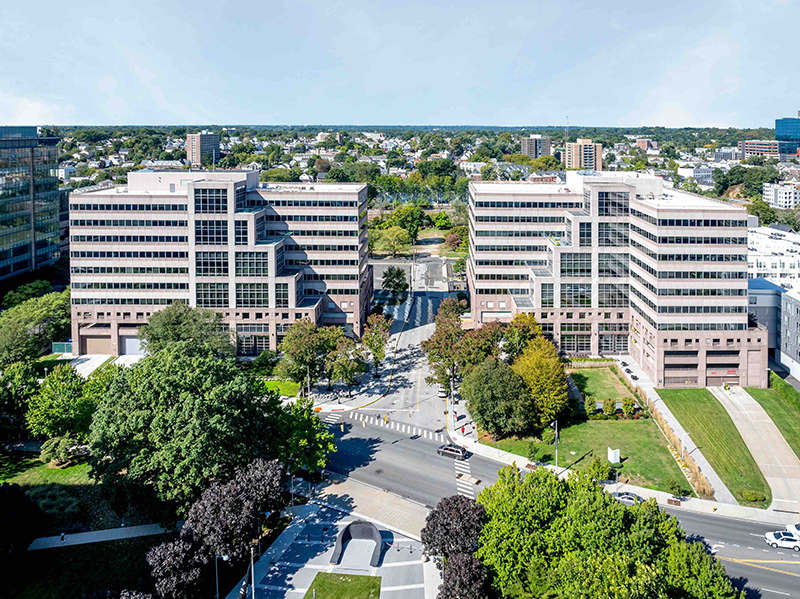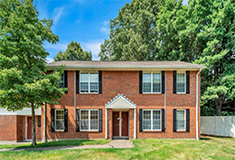News:
Connecticut
Posted: February 18, 2009
Investors positioned to take advantage of Hartford apartment market
The tide started to turn in the Hartford apartment market in the second half of last year, as demand eased, vacancy rose and rents began to drop. As the economic downturn deepens and affects the Hartford metro area more significantly than yet measured, key property fundamentals will weaken further in 2009. Specifically, vacancy is expected to rise 150 basis points to 6.7%, while asking rents and effective rents will decrease 1.2% and 1.7%, respectively.
Historically, the Hartford market has been characterized by steady rental housing demand driven by job growth in established industries and the state government, while supply growth has mostly kept pace with demand. In 2009, however, local employers are forecast to cut 20,000 jobs, up from the 7,200 positions that were eliminated last year. As a result of the projected decline in employment, household formations will slow and the number of occupied apartments in the market is expected to fall for the first time in five years.
The surge in the number of unemployed partly accounted for the 70 basis point rise in the vacancy rate in the market's Class B/C properties. Tenants in lower-tier properties either vacated units or doubled up with others. As job losses accumulate and periods of unemployment lengthen in the months ahead, more doubling up will occur, resulting in higher vacancy and diminishing the ability of owners to raise rents.
In the market's Class A segment, meanwhile, vacancy rose 100 basis points last year to 7%, primarily as a result of an increase in supply. Specifically, completions in the market last year totaled 386 units, an amount that expanded the stock of high-end units 2.9%. While supply growth contributed to the rise in vacancy, the Class A sector was not immune from the reduction in demand generated by the decline in employment, as negative net absorption was recorded in the fourth quarter. In the near term, the vacancy rate in the Class A segment will be pressured by falling demand and additional supply growth. In the Hartford CBD, people working in downtown are now also living in newly constructed or adaptively re-used properties. The convenience and access to shops, restaurants and theaters has become highly attractive to lifestyle, urban renters and we expect this pattern to continue.
This year, approximately 500 units are expected to be completed in the market, an increase from last year's total and an addition to rental inventory of 1.4%. Key projects scheduled for completion this year include 290 units in the second phase of the Deer Valley Townhomes, a rental community in Ellington. Also, the 129-unit South Armory complex in Hartford is slated for completion in the spring. Typically, rental projects in the market have been built to meet unfulfilled demand; accordingly, new units have generally been absorbed rather quickly. Developers with projects scheduled for completion this year, however, may be victims of unfortunate timing. As a result, some of the projects slated to be completed this year may be pushed back into 2010. In addition, some of the 1,200 units planned in the market may sit on the shelf a while longer or be dropped entirely.
Some large properties sold last year, including the 303-unit Waterford Commons in Manchester. The property changed hands for $141,200 per unit, a price that factors to a 6.2% cap rate. In the months ahead, investors are expected to remain active in strong rental submarkets, such as Manchester, East Hartford, and Middletown.
Despite the current upheaval in fundamentals and expected near-term challenges stemming from the economic downturn, the Hartford market continued to generate investor interest in 2008. Many of these buyers understand the long-term viability of the area's demand drivers and the role that rental housing assumes for many households that earn less than the metro area's median household income of $66,100 per year. Hartford County multifamily transactions in 2008 decreased by 54% from the previous year and dollar volume was lower by 47% but average per-unit value increased by 17% to $85,464. Hartford continues to be referred to as "New England's Rising Star" and it will be on many buyers radar screens this year as there will be a number of opportunities to invest in what is perceived as a growth market.
With changing demographics - more echo boomers entering the rental market and baby boomers rethinking housing alternatives - we fully expect to quickly return to historically strong occupancy levels and solid rental growth for those property owners intuitive enough to competitively maintain their regional apartment communities. While we expect 2009 to be a tough year for investment real estate, multifamily is certainly the preferred product type for institutional and private investors delivering stable, solid returns, particularly in the supply-constrained Hartford County markets.
Steve Witten is a vice president, investments and senior director of the National Multi Housing Group in the New Haven office of Marcus & Millichap Real Estate Investment Services.
Tags:
Connecticut
MORE FROM Connecticut
CBRE brokers sale of Stamford Towers - 326,468 s/f Class A office
Stamford, CT The CBRE team of Jeff Dunne, Steve Bardsley, and Travis Langer, in collaboration with David Block, completed the sale of Stamford Towers, located at 680 & 750 Washington Blvd. CBRE represented the seller, CBRE Investment Management, and procured the buyer, a joint venture of Lamar Companies

Quick Hits










.png)
